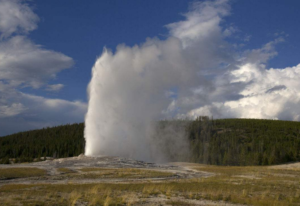What is a Geyser?A geyser is a vent in Earth’s floor that periodically ejects a column of hot water and steam. Even a small geyser is an amazing phenomenon; but, some geysers have eruptions that blast thousands of gallons of boiling-warm water up to a few hundred toes within the air.

How Geysers formed
There are loads of solar geysers across the worldestimates are as much as 700and Yellowstone boasts almost half of them. The name “geyser” comes from the Icelandic word “geysir,” for “gush,” and the unique namesake is observed in Iceland, inside the Haukadalur Basin. sadly, it handiest erupts every so often, which illustrates some other essential point approximately geysers. they may be ephemeral functions, usually best lasting for several thousand years or till a major geologic occasion occurs. as an instance, an earthquake of significance 6.1 in 1975 inside the Norris Geyser Basin of Yellowstone caused more water volumes to flow in some geysers and reduced the pastime of others by rearranging groundwater paths and fracture styles at some point of the place. Even earthquakes as small as significance 4 can trade the conduct and eruption periods of geysers. furthermore, it turns out that earthquakes may be important to maintain some geysers lively. over time, water conduits feeding geysers can grow to be narrower or maybe clog as a result of deposition of minerals from the hot water (much like pipes can clog in regions with hard, mineral-wealthy water). frequent tremors can also break up the deposits or create new fractures, providing opportunity pathways for the water to transport through the rock and preserve the geysers furnished.
Will geysers always form?
Geysers result from the water heating of groundwater by means of shallow our bodies of magma. they are normally associated with regions which have seen beyond volcanic interest. The spouting motion is as a result of the surprising release of strain that has been confining near-boiling water in deep, narrow conduits under a geyser. As steam or gas bubbles begin to form inside the conduit, warm water spills from the vent of the geyser, and the strain is diminished on the water column under. Water at depth then exceeds its boiling factor and flashes into steam, forcing more solar water from the conduit and decreasing the strain in addition. This chain reaction continues until the geyser exhausts its supply of boiling water.
Related Searches: Flat plate solar water heater | Electric storage water heater | Air source water heater
Want to know more?(Solar Water Heater)
Email: [email protected]
WhatsApp:+86 157 2077 3477
Skype :+86 157 2077 3477
